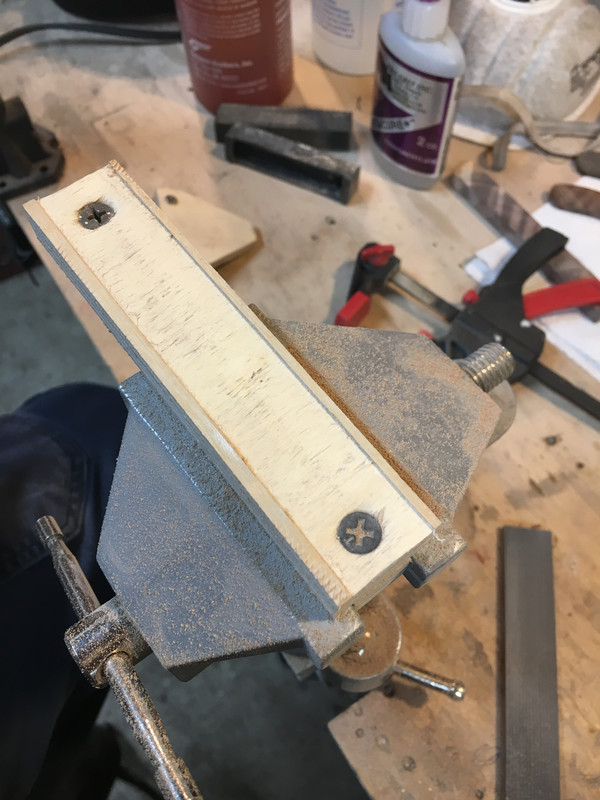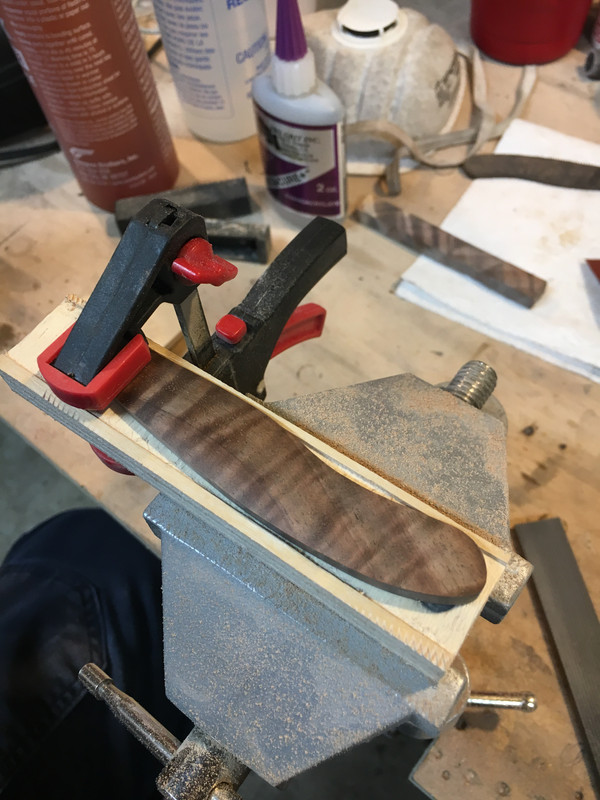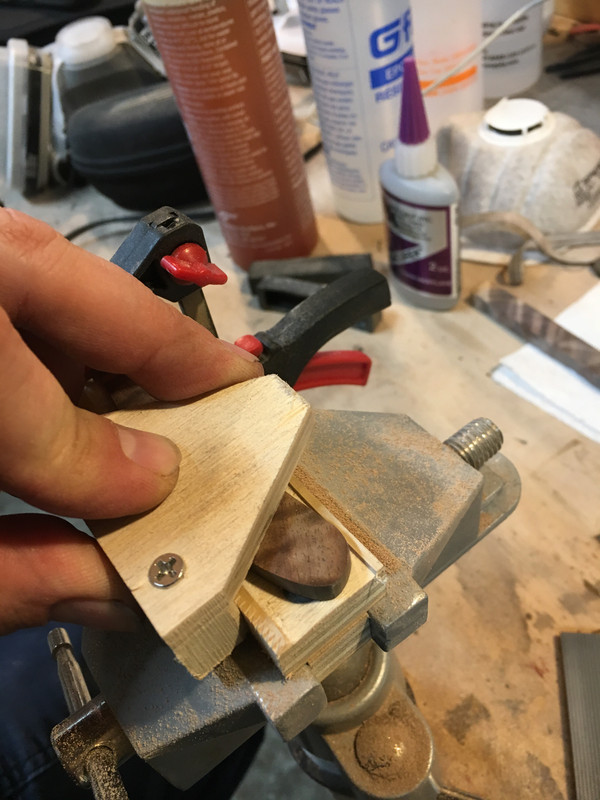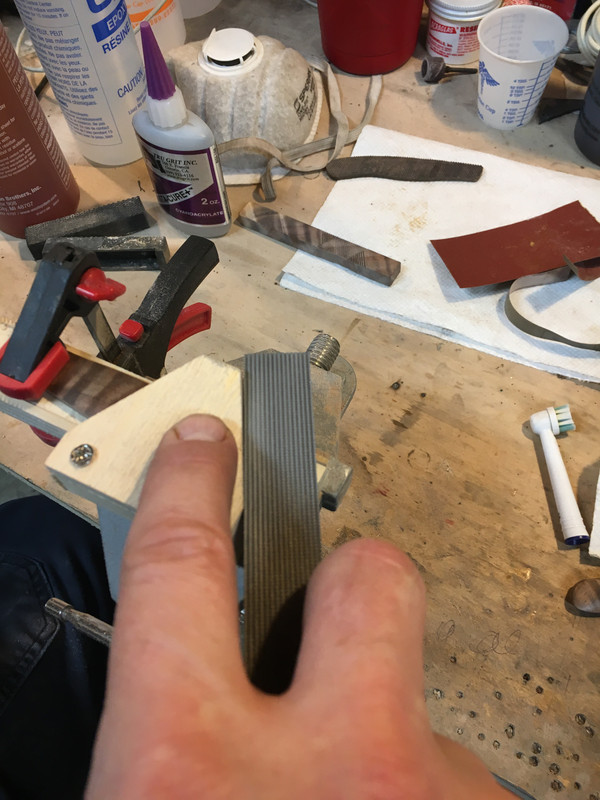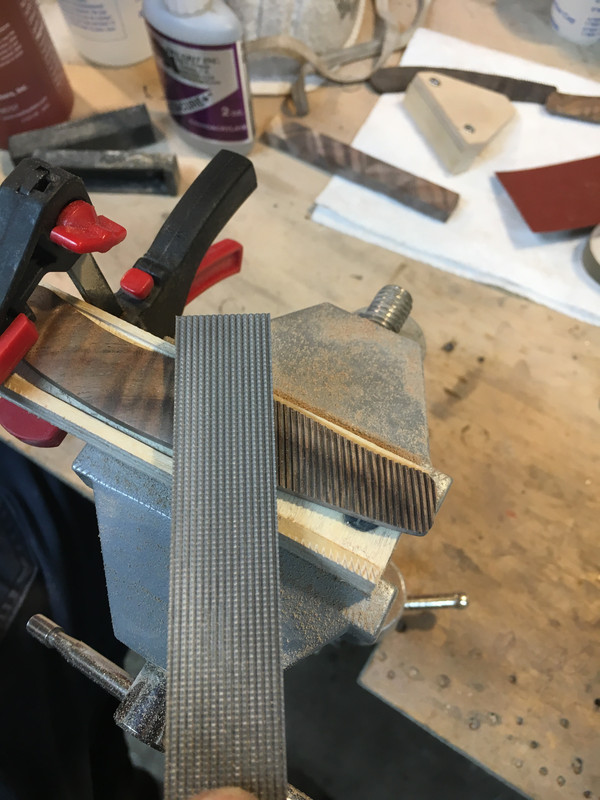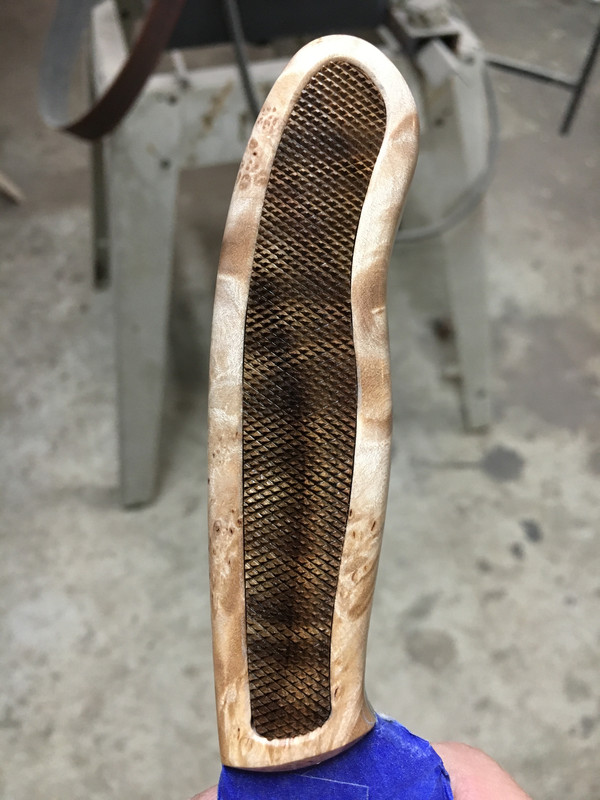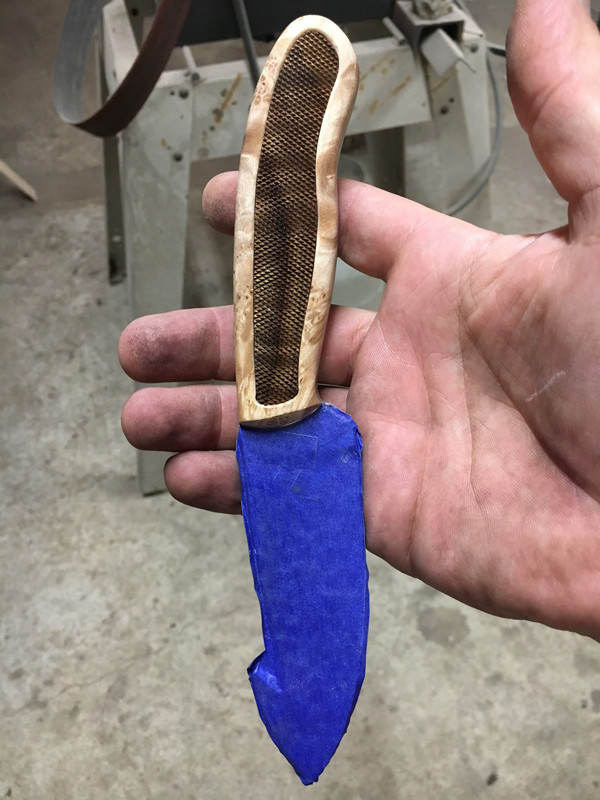You are using an out of date browser. It may not display this or other websites correctly.
You should upgrade or use an alternative browser.
You should upgrade or use an alternative browser.
GeneK's KITH WIP
- Thread starter Gene Kimmi
- Start date
Smallshop
KNIFE MAKER
That turned out real nice!! True oil will probably be the perfect finish.To do the checkering, I cut a groove in a piece of plywood to hold the inlay.
I also made a jig to use as a guide for the file. The angle is 30 deg.
Here I have started cutting the checkering.
And I just couldn't wait any longer, so I headed back to the shop and finished one inlay.
The walnut I used for the inlay is stabilized, but I haven't figured a way to buff the checkering, so I will put Tru-oil on them.
Motor City Mike
Well-Known Member
Looks awesome
Daniel Macina
Well-Known Member
Wow! Just wow!
Kevin Zito
KNIFE MAKER
Again, in awe! I want those skills!
Chris Railey
Well-Known Member
JAMB UP
Gene Kimmi
KNIFE MAKER
Thanks for the compliments. I finished checkering the second inlay and got them epoxied in tonight.
After checkering them, I cut a groove around the edge of the inlays and the handle where the inlay goes. This will create an epoxy ring that will lock the inlay to the handle.
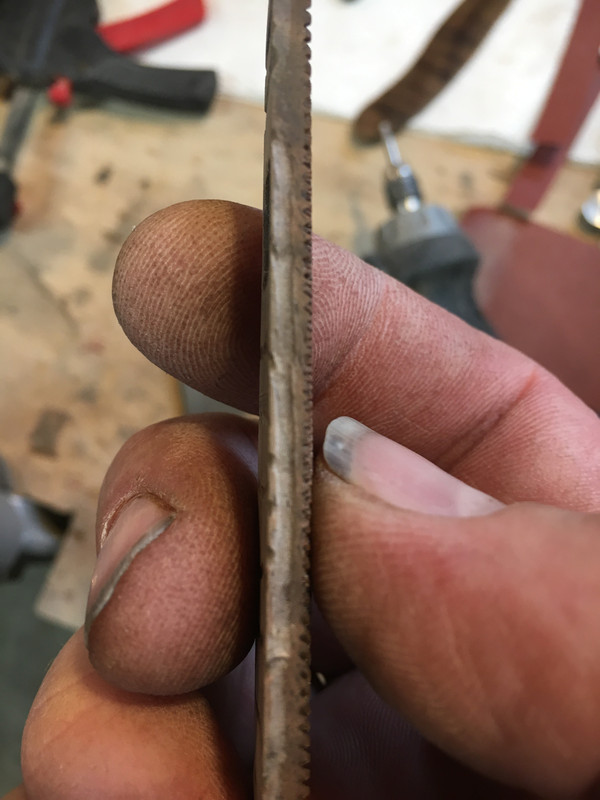
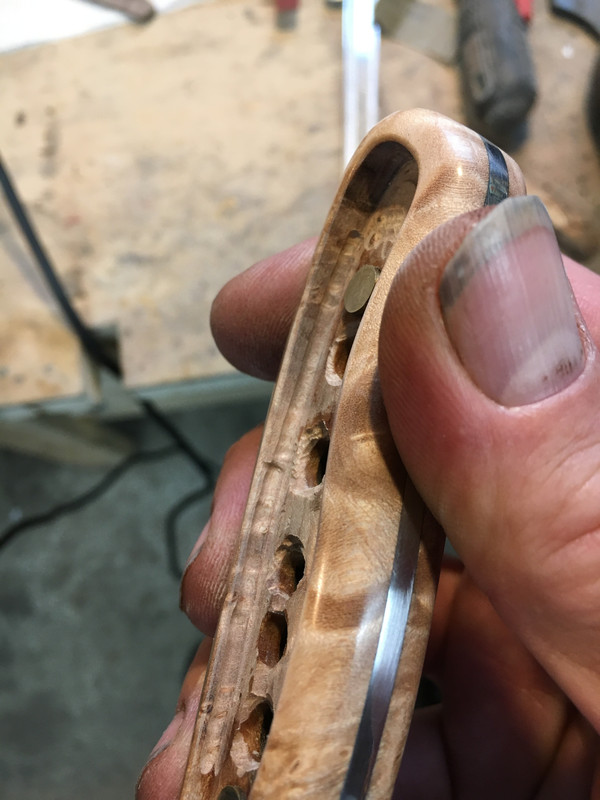
I also cut grooves on the back of the inlay for more bonding area for the epoxy.

And they are epoxied in.
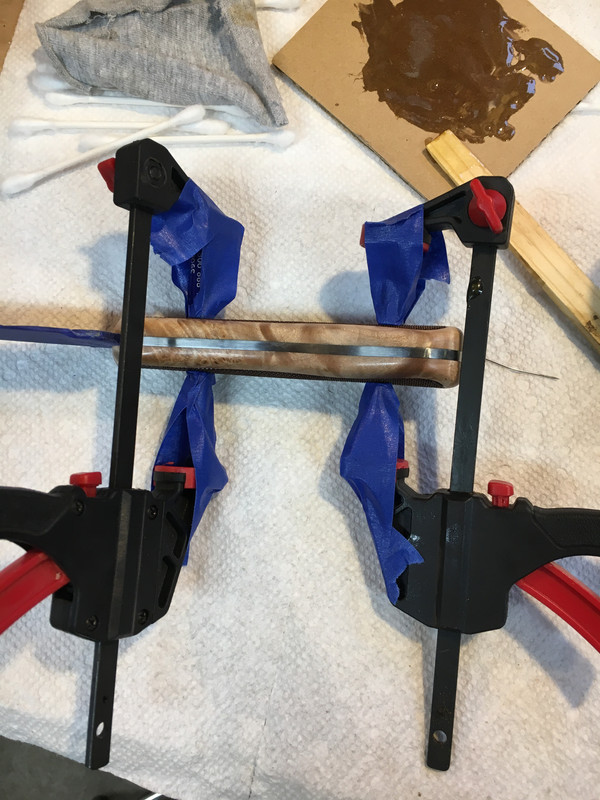
After checkering them, I cut a groove around the edge of the inlays and the handle where the inlay goes. This will create an epoxy ring that will lock the inlay to the handle.


I also cut grooves on the back of the inlay for more bonding area for the epoxy.

And they are epoxied in.

Motor City Mike
Well-Known Member
Wow. That checkering really takes it to another level
Gene Kimmi
KNIFE MAKER
After letting the epoxy cure on the inlays, I decided to seal the joint between the handle and the inlays. The joint was pretty tight, but I wouldn't want something getting in there and be hard to clean. I used a syringe and needle to do this with. I added brown dye to the epoxy so it would match well.
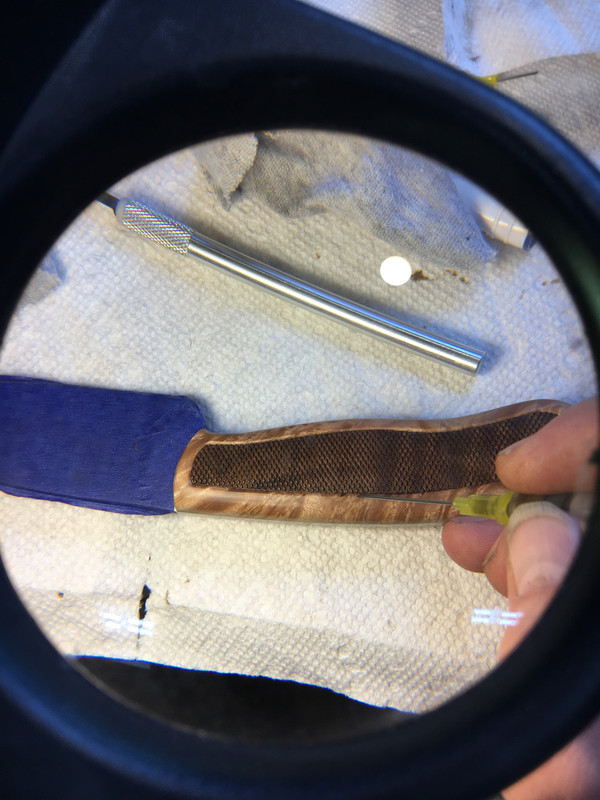
A little light and magnification helped. This was a pretty tedious job.
A couple shots of the handle after the epoxy dried.
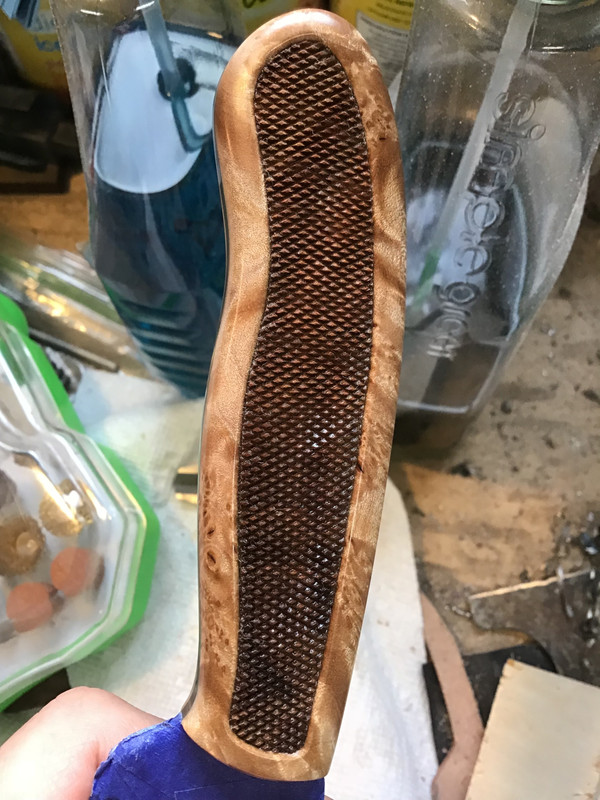
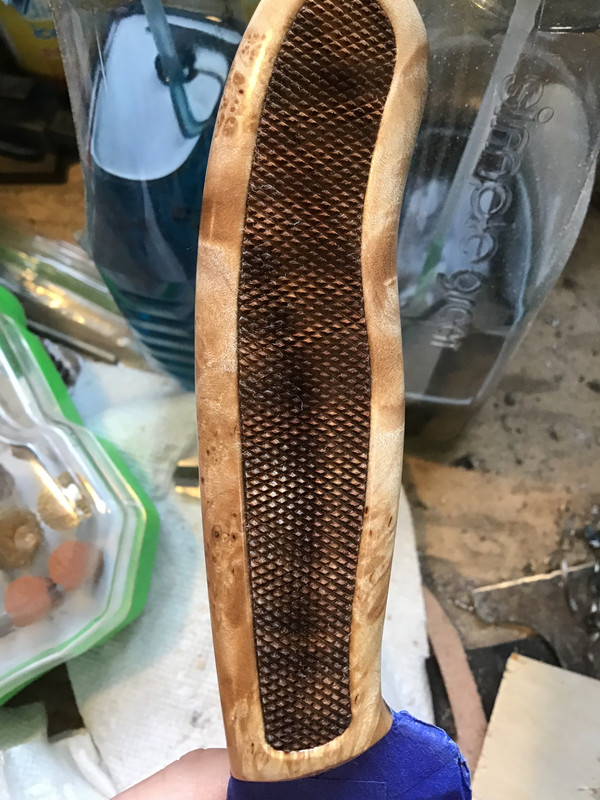
I'll be putting a few more coats of Tru-oil on the inlay, then it should be finished.

A little light and magnification helped. This was a pretty tedious job.
A couple shots of the handle after the epoxy dried.


I'll be putting a few more coats of Tru-oil on the inlay, then it should be finished.
Chris Railey
Well-Known Member
Someone is going to be blessed
Dennis Morland
KNIFE MAKER
Agreed, very nice.
Gene Kimmi
KNIFE MAKER
Very nice work and very informative.
Can you share the type epoxy you put in a syringe to seal edges. I imagine it was a very thin epoxy and am not aware of an epoxy that thin.
I used the G-Flex epoxy for that. The needle I used is a larger size that I use for glazing in the cabinet shop. I ground it to a point, but it still went on a little heavy. I used a tooth brush and denatured alcohol to clean it up.
On the next one, I will just dye the epoxy when I put the inlays in and let it squeeze out. On this one, I was afraid it would be hard to impossible to clean any squeeze out off the checkering, but the toothbrush worked great.

